Temperature sensors for heating: purpose, types, installation instructions
When operating heating devices, it is necessary to control the degree of heating of the coolant, as well as the air in the room.Temperature sensors for heating help to capture and transmit information, information from which can be read visually or immediately sent to the controller.
We suggest you understand how temperature sensors work, what types of monitoring devices exist, and what parameters should be taken into account when choosing a device. In addition, we have prepared step-by-step instructions that will help you install a temperature sensor on a heating radiator yourself.
The content of the article:
Operating principle of a thermal sensor
You can control the heating system using a variety of methods, including:
- automatic devices for timely energy supply;
- security monitoring blocks;
- mixing units.
For the correct operation of all these groups, temperature sensors are required to provide signals about the operation of the devices. Observing the readings of these devices allows us to timely identify faults in the system and take corrective measures.

A temperature sensor can be used as a separate device, for example, to monitor the temperature of a room, or be an integral part of a complex device, for example, a heating boiler.
The basis of such devices used in automated control is the principle of converting temperature indicators into an electrical signal. Thanks to this, measurement results can be quickly transmitted over the network in the form of a digital code, which guarantees high speed, sensitivity and accuracy of measurement.
At the same time, various devices for measuring the heating stage may have design features that affect a number of parameters: operation in a certain environment, transmission method, visualization method, and others.
Types of devices for taking temperature
Thermal devices can be classified according to a number of important criteria, including the method of transmitting information, the location and conditions of installation, as well as the algorithm for taking readings.
By method of information transfer
According to the method of transmitting information used, sensors are divided into two large categories:
- wired devices;
- wireless sensors.
Initially, all such devices were equipped with wires through which thermal sensors communicated with the control unit, transmitting information to it. Although such devices have now replaced their wireless counterparts, they are still often used in simple circuits.
In addition, wired sensors are more accurate and reliable in operation.
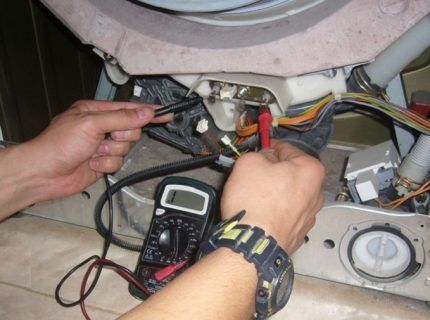
Currently, wireless devices have become widespread, which most often transmit information using a radio wave transmitter and receiver. Such devices can be installed almost anywhere, including a separate room or open air.
Important characteristics of such temperature sensors are:
- presence of battery;
- error of measurements;
- signal transmission range.
Wireless/wired devices can completely replace each other, but there are some peculiarities in their functioning.
By location and method of placement
Based on the mounting location, such devices are divided into the following types:
- overheads attached to the heating circuit;
- submersible, in contact with the coolant;
- indoor, located inside a residential or office space;
- external, which are located outside.
Some units may use several types of sensors simultaneously to control temperature.
According to the mechanism for taking readings
According to the method of displaying information, devices can be:
- bimetallic;
- alcohol.
The first option involves the use of two plates made of different metals, as well as a dial indicator. As the temperature rises, one of the elements is deformed, creating pressure on the arrow. The readings of such devices are characterized by good accuracy, but their big disadvantage is their inertia.

Sensors whose operation is based on the use of alcohol are almost completely free from this drawback. In this case, an alcohol-containing solution is poured into a hermetically sealed flask, which expands when heated. The design is quite elementary, reliable, but not very convenient for observations.
Various types of temperature sensors
To take temperature readings, devices with different operating principles are used. The most popular devices include the devices listed below.
Thermocouples: accurate reading - difficult to interpret
Such a device consists of two wires soldered to each other, made of different metals. The temperature difference that occurs between the hot and cold ends serves as a source of electric current of 40-60 μV (the indicator depends on the material of the thermocouple).

The thermocouple is considered a highly accurate temperature sensor, but it is quite difficult to take accurate readings from it. To do this, you need to find out the electromotive force (EMF) using the temperature difference of the device.
For the result to be correct, it is important to compensate for the temperature of the cold junction, using, for example, a hardware method in which a second thermocouple is placed in an environment of a previously known temperature.
The software compensation method involves placing another temperature sensor in the isochamber together with the cold junctions, which allows you to control the temperature with a given accuracy.
The process of obtaining data from a thermocouple causes certain difficulties due to its nonlinearity. To ensure the correctness of readings, GOST R 8.585-2001 introduces polynomial coefficients that allow you to convert EMF to temperature, as well as perform reverse operations.
Another problem is that readings are taken in microvolts, which cannot be converted using widely available digital instruments.To use a thermocouple in designs, it is necessary to provide accurate, multi-digit converters with a minimum noise level.
Thermistors: easy and simple
It is much easier to measure temperature using thermistors, which are based on the principle of dependence of the resistance of materials on the ambient temperature. Such devices, for example, made of platinum, have such important advantages as high accuracy and linearity.
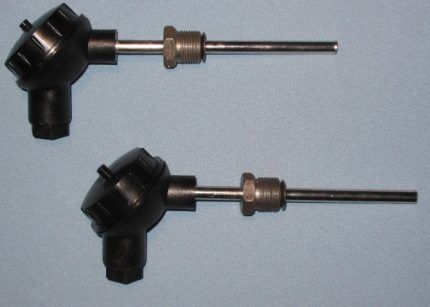
An important characteristic of a resistor is its base resistance at a certain temperature. According to GOST 21342.7-76, this indicator is measured at 0°C. In this case, it is recommended to use a number of resistance values (Ohms), as well as Tks – temperature coefficient.
T indicatorks calculated by the formula:
Tks = (Re – R0c)/(Te – T0c) *1/R0c,
Where:
- Re – resistance at current temperature;
- R0c – resistance at 0°C;
- Te – current temperature;
- T0c – 0°C.
GOST also provides temperature coefficients provided for various measuring devices made of copper, nickel, platinum, and also indicates polynomial coefficients used to calculate temperature based on current resistance values.
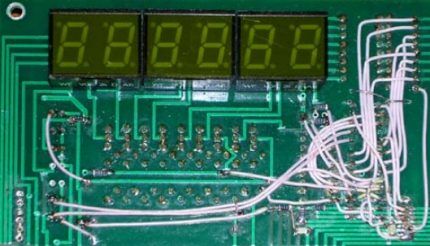
You can measure resistance by connecting the device to a current source circuit and measuring the differential voltage. You can monitor the indicators using integrated circuits, the analog output of which is equal to the supply voltage.
Thermal sensors with such devices can be safely connected to an analog-to-digital converter, digitizing it with an eight or ten-bit ADC.
Digital sensor for simultaneous measurements
Digital temperature sensors are also widely used, for example, the DS18B20 model, which operates using a microcircuit with three outputs. Thanks to this device, it is possible to take temperature readings simultaneously from several parallel working sensors, with an error of only 0.5°C.
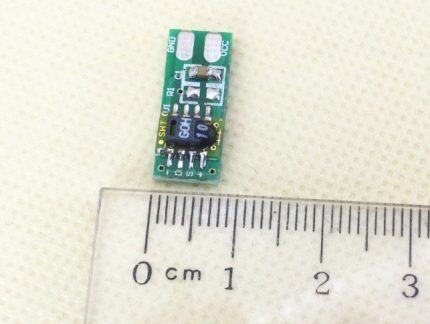
Among other advantages of this device, one can also note a wide range of operating temperatures (-55+125°C). The main drawback is slow operation: for the most accurate calculations, the device requires at least 750 ms.
Non-contact irometers (thermal imagers)
The action of these contactless sensors is based on detecting thermal radiation emanating from bodies. To characterize this phenomenon, the amount of energy released per unit time from a unit surface, which falls on a unit wavelength range, is used.
A similar criterion that reflects the intensity of monochromatic radiation is called spectral luminosity.
The following types of pyrometers exist:
- radiation;
- brightness (optical);
- color.
Radiation pyrometers allow measurements to be made within the range of 20-25000°C, however, to determine the temperature, it is important to take into account the radiation incompleteness coefficient, the effective value of which depends on the physical state of the body, its chemical composition and other factors.
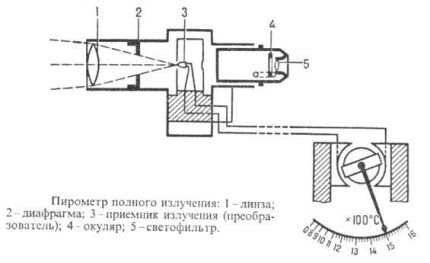
Brightness (optical) pyrometers designed to measure temperatures 500-4000°C. They provide high measurement accuracy, but can distort the readings due to the possible absorption of radiation from bodies by the intermediate medium through which observations are made.
Color pyrometers, the action of which is based on determining the intensity of radiation at two wavelengths - preferably in the red or blue part of the spectrum, are used for measurements in the range of 800 to 0 ° C.
Their main advantage is that the incompleteness of radiation does not affect measurement errors. In addition, the indicators do not depend on the distance to the object.
Quartz temperature converters (piezoelectric)
To take temperature readings within the range of -80 +250°C, you can use quartz transducers (piezoelectric elements), the operating principle of which is based on the frequency dependence of quartz on heating. In this case, the function of the transducer is influenced by the location of the cut along the crystal axes.
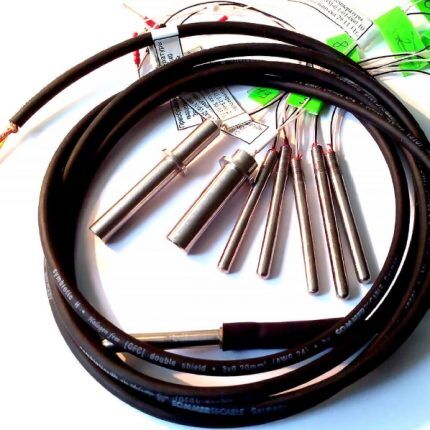
Piezoelectric sensors are distinguished by fine sensitivity, high resolution, and are able to operate reliably over a long period of time. Such devices are widely used in the manufacture of digital thermometers and are considered one of the most promising devices for future technologies.
Noise (acoustic) temperature sensors
The operation of such devices is ensured by removing the acoustic potential difference depending on the temperature of the resistor.

The method of measurement with such sensors is quite simple: it is necessary to compare the noise produced by two similar elements, one of which is at a previously known temperature, and the second at a determined temperature.
Acoustic temperature sensors are suitable for measuring the range -270 - +1100°C. At the same time, the difficulty of the process lies in the too low noise level: the sounds produced by the amplifier sometimes drown it out.
NQR temperature sensors
The essence of the operation of nuclear quadrupole resonance thermometers is the action of the field gradient, which is formed by the crystal lattices and the nuclear moment - an indicator caused by the deviation of the charge from the symmetry of the sphere.
As a result of this phenomenon, a procession of nuclei occurs: its frequency depends on the gradient of the lattice field.The value of this indicator is also influenced by temperature: its rise causes a drop in the NQR frequency.
The main element of such sensors is an ampoule with a substance, which is placed in an inductance winding connected to the generator circuit.
The advantage of the devices is the unlimited duration of measurements, reliability and stable operation. The disadvantage is the nonlinearity of measurements, which necessitates the use of a conversion function.
Semiconductor devices
A category of devices that operate based on changes in the characteristics of a p-n junction caused by exposure to temperatures. The voltage across the transistor is always proportional to the effect of temperature, which makes this factor easy to calculate.
The advantages of such devices are high data accuracy, low cost, and linear characteristics over the entire measurement range. It is convenient to mount such devices directly on a semiconductor substrate, making them excellent for microelectronics.
Volumetric transducers for temperature readings
Such devices are based on the well-known principle of expansion and contraction of substances observed during heating or cooling. Such sensors are quite practical. They can be used to determine temperatures within the range -60 - +400°C.
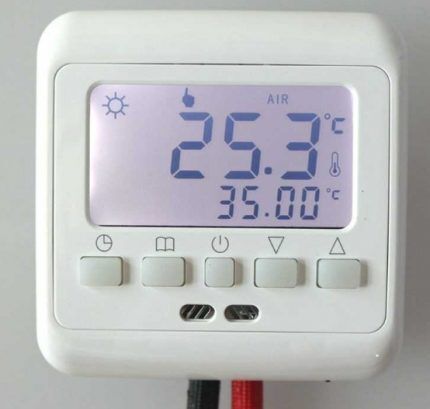
It is important to remember that measurements of liquids with such devices are limited by their boiling and freezing temperatures, and measurements of gases by their transition to the liquid state.The measurement error caused by environmental influences for these devices is quite small: it varies between 1-5%.
Selection of temperature sensors
When choosing such devices, factors such as:
- temperature range in which measurements are taken;
- the need and possibility of immersing the sensor in an object or environment;
- measurement conditions: to take readings in an aggressive environment, it is better to prefer a non-contact version or a model placed in a corrosion-resistant housing;
- the service life of the device before calibration or replacement - some types of devices (for example, thermistors) quickly fail;
- technical data: resolution, voltage, signal speed, error;
- output signal value.
In some cases, the material of the device body is also important, and when used indoors, the dimensions and design are also important.
Do-it-yourself installation recommendations
Such devices are widely used for various purposes: they are equipped with radiators, heating boilers and other household appliances.
Before starting installation, you should carefully read the instructions: it indicates not only the installation features (for example, dimensions for connecting to the pipe), but also the operating rules, as well as the temperature limits for which the measuring device is suitable.
It is also necessary to take into account the size of the sleeve, which can vary between 120-160 mm.
Let's consider the two most common cases of installing a temperature sensor.
Connecting the device to a radiator
It is not necessary to equip all heating devices with a thermostat. According to the regulations, sensors are installed on the battery, if its total power exceeds 50% of the heat generated by similar systems.If there are two heaters in the room, then the thermostat is installed only on one, which has a higher power rating.
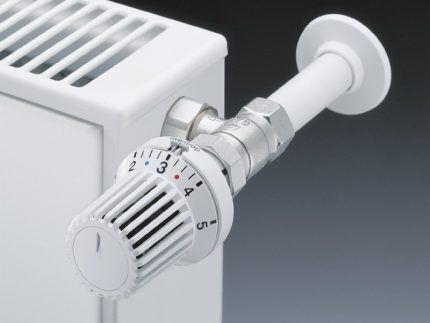
The device valve is installed on the supply pipeline at the point where the radiator is connected to the heating network. If it is impossible to insert it into an existing chain, the supply line must be dismantled, which can cause some difficulties.
To carry out this manipulation, you need to use a tool for cutting pipes, while installing a thermal head can be easily done without special equipment. As soon as the sensor is mounted, it is enough to align the marks made on the body and the device, after which the head is fixed with a smooth hand press.
Installation of air temperature sensor
Such a device is installed in the coldest living room without drafts (in the hall, kitchen or boiler room its installation is undesirable, as it can cause disruptions in the operation of the system).
When choosing a location, you need to make sure that the device is not exposed to sunlight, and there should be no heating devices (heaters, radiators, pipes) nearby.
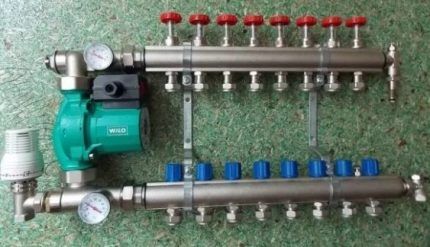
The device is connected according to the instructions contained in the technical data sheet, using the terminals or cable included in the kit.
If you need to monitor your temperature temperature sensor in the “warm floor” can be located deep in the concrete screed. In this case, for protection, you can use a corrugated pipe with one closed end and a sloping bend.
The latter feature allows, if necessary, to remove the broken device and replace it with a new one.
Installation of the device is carried out as follows:
- A recess is made in the wall for mounting an attachment.
- The front part is removed from the temperature sensor, after which the device is installed on the prepared area.
- Next, the heating cable is connected to the contacts, while the terminals are connected to the sensors.
The final stage is connecting the power cable and installing the front panel in its place.
The thermostat connection diagram for a heating boiler is described in detail in this article.
If the device, the functionality of which requires internal connection of sensors, has a complex design, it is better to contact specialists.
Conclusions and useful video on the topic
The video below describes in detail how to install thermal devices on a heating boiler:

Is the installation of sensors on the supply and return pipes different?

Temperature sensors are widely used both in various industries and for domestic purposes. A large assortment of similar devices, which are based on different operating principles, allows you to choose the best option for solving a particular problem.
In houses and apartments, such devices are most often used to maintain a comfortable temperature in the premises, as well as to regulate heating systems - radiators, heated floors.
Do you have anything to add, or do you have questions about choosing and installing a temperature sensor? You can leave comments on the publication, participate in discussions and share your own experience of using such devices. The contact form is located in the lower block.




I didn’t spend much on sensors; my heating system requires several of them. I have a solid fuel boiler and a hot water buffer.
I bought it with a dial, bimetallic, in my opinion, from the German company Wats, there is a scale up to 120C, and you can clearly see the degrees. The boiler itself also comes with one from the manufacturer, I just added it to the supply, return, and in several places to the input and output from the buffer.
I am quite satisfied with their accuracy and visibility, the dial is large. As for inertia: 1-2 minutes is normal, I think, in terms of time.